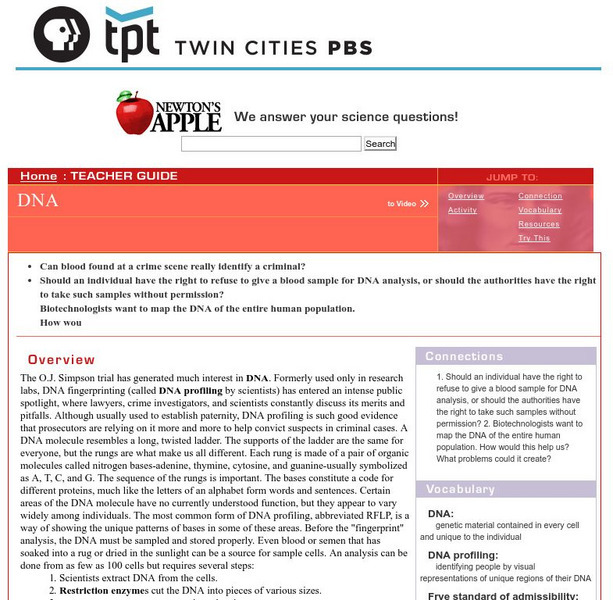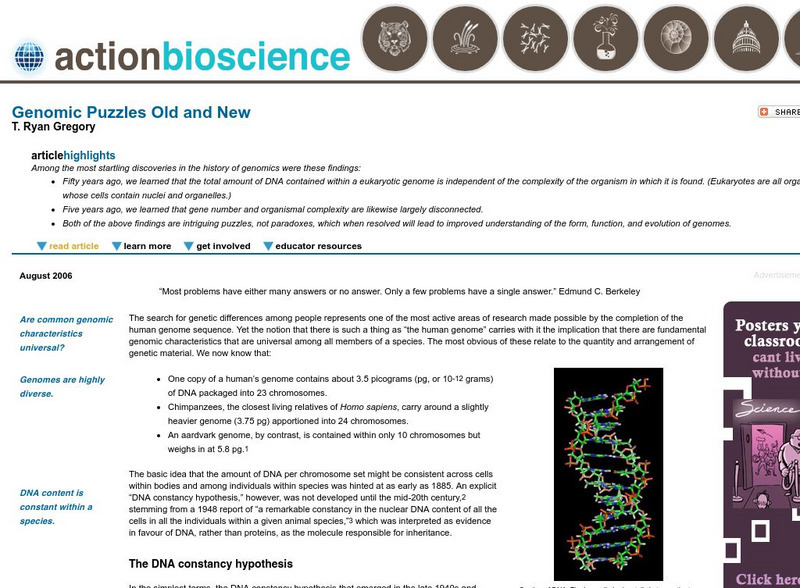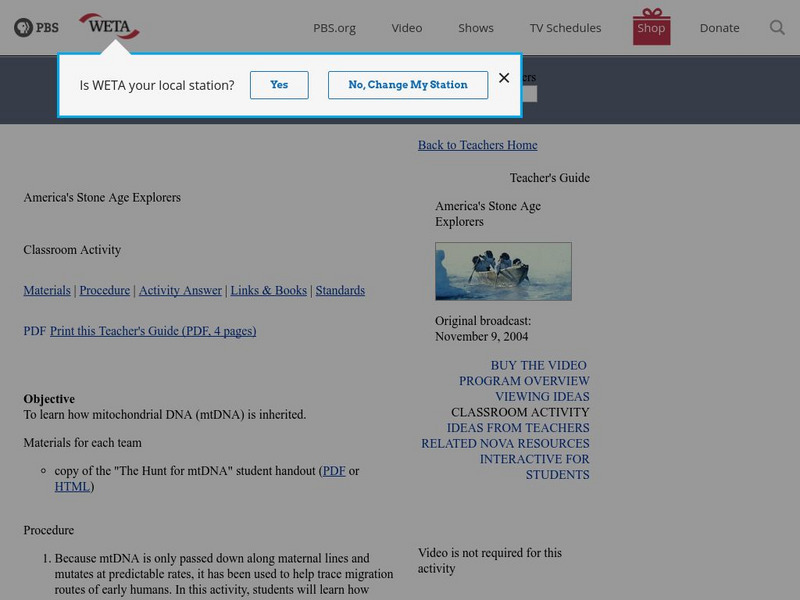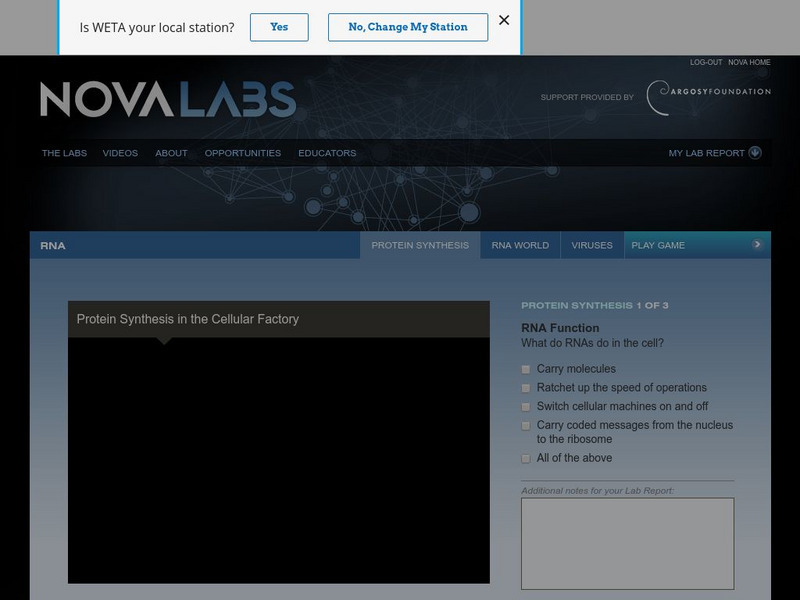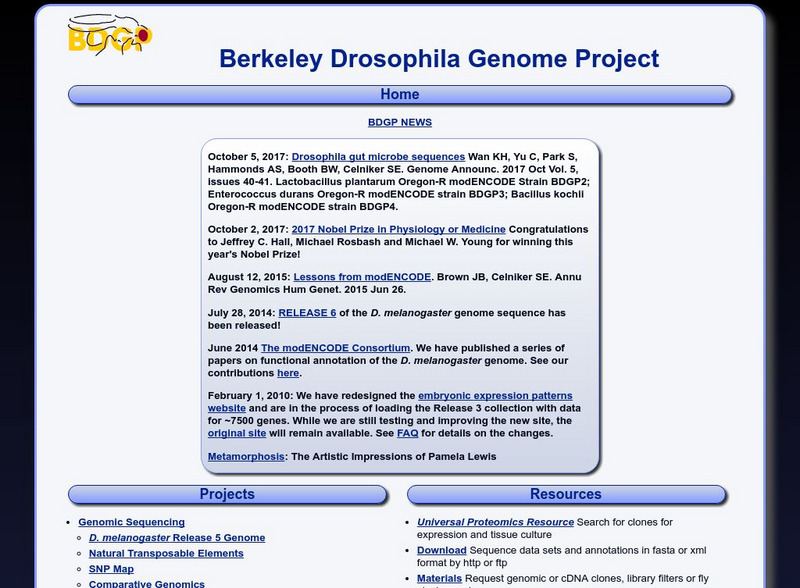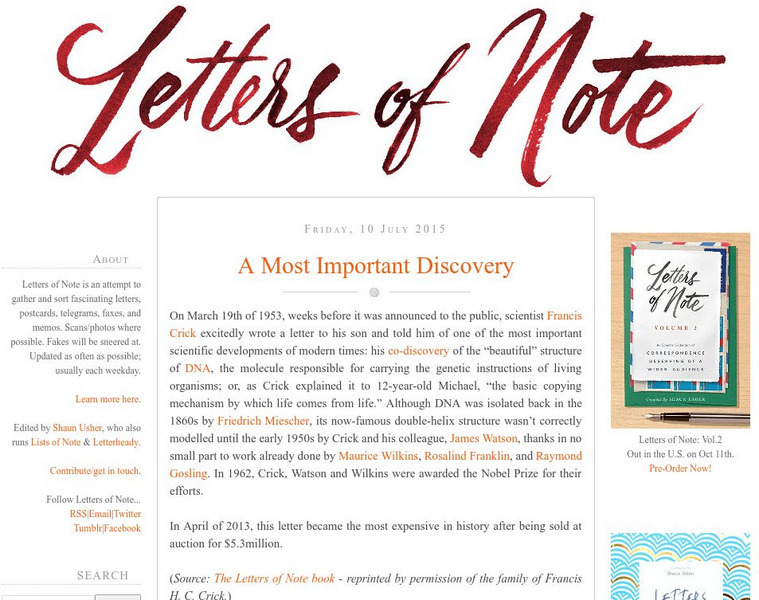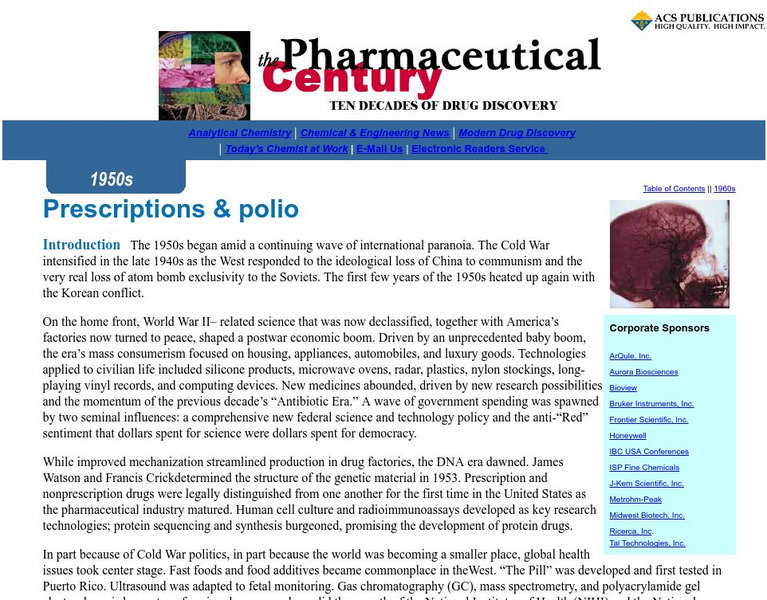Hi, what do you want to do?
University of Arizona
The Biology Project: Nucleic Acids Problem Set
Interactive resource provides students with an opportunity to work through a problem set over nucleic acids. Correct answers are reinforced with a brief explanation. Incorrect answers are linked to tutorials to help solve the problem.
Yale University
Yale New Haven Teachers Institute: Heredity: Your Connection to the Past
An indepth introduction to genetics as a whole with sample lessons, vocabulary, and bibliography. From the Yale-New Haven Teachers Institute.
University of Oxford (UK)
University of Oxford: Proteins and Nucleic Acids: Information Carriers
This chapter takes a look at proteins and nucleic acids as information carriers. Discover why the arrangement of atoms is of special importance.
University of Oxford (UK)
Univeristy of Oxford: Self Sustaining Chemical Systems: Living Cells
36-page tutorial takes a look at the organization of living cells.
PBS
Newton's Apple: Dna Fingerprinting
Great investigation topic revolving around DNA fingerprinting. Worth a look, educates and involves!
About Kids Health
About Kids Health: How the Body Works: Genetics
Learn all about genetics and how it works in this interactive teaching aid that highlights the study of genes using colorful animated illustrations.
The Association of the British Pharmaceutical Industry
Abpi: Polymerase Chain Reaction
An interactive, self-paced lesson on polymerase chain reaction. Students read information and watch descriptive animations to aid in understanding. A self-check quiz follows the activity.
American Institute of Biological Sciences
Action Bioscience: Genomic Puzzles Old and New
An explanation of genomes in regards to the amount of DNA compared to the number of chromosomes in different organisms. Additional discussion focuses on how the human genome is different from other species.
Encyclopedia of Earth
Encyclopedia of Earth: Microbiology: Dna
Describes the structure and coding of DNA, how it replicates, and the role it plays at the cellular level. Looks at past and current research on DNA, and applications of this research. (Published: September 25, 2010)
University of Colorado
University of Colorado: Ph Et Interactive Simulations: Gene Machine: The Lac Operon
Build a gene network. The lac operon is a set of genes which are responsible for the metabolism of lactose in some bacterial cells. Explore the effects of mutations within the lac operon by adding or removing genes from the DNA.
University of Colorado
University of Colorado: Ph Et Interactive Simulations: Stretching Dna
Explore stretching just a single strand of DNA using optical tweezers or fluid flow. Experiment with the forces involved and measure the relationship between the stretched DNA length and the force required to keep it stretched.
PBS
Pbs Teachers:america's Stone Age Explorers
Discover how mitochondrial DNA (mtDNA) is inherited, and complete a pedigree chart by determining which individuals might share mtDNA with an unknown ancestor.
PBS
Pbs Bloodlines: Technology Hits Home
This site is a must see for any lesson or unit on biotechnology! It is a companion to the PBS video "Bloodlines: Technology Hits Home," although it can certainly be used without the video. It's a fantastic site that will challenge...
US Department of Energy
Doe: Joint Genome Institute
This Department of Energy site has up-to-date information and statistics on the progress of all JGI genome sequencing projects.
Nature Research
Scitable: Gene Expression and Regulation
Investigate gene expression with this collection of resources that explains how DNA is expressed to make RNA, how genes are turned "on" and "off", and what must occur for transcription to happen. The webpage explores gene expression by...
PBS
Pbs: Nova Labs: Protein Synthesis in the Cellular Factory
Watch short animations, read informational text, and make hypotheses about different aspects of protein synthesis.
Science Museum, London
Science Museum: Making the Modern World: Dna: Structure and Function
The learning module helps students gain a deeper understanding of the structure and function of DNA.
Other
Berkley Drosophila Genome Project
This site is dedicated to the mapping of the fruit fly (drosophila) genome.
Other
The Big Picture Book of Viruses
This site has a catalog of all known viruses, including a picture of each, structure, family, hosts, and more.
Other
Letters of Note: A Most Important Discovery
Read a letter that Francis Crick wrote to his son shortly before Crick and Watson published their findings about the structure of DNA. In the letter, Crick clearly describes how the double helix structure works.
American Chemical Society
The Pharmaceutical Century: The 1950s
This extensive review of the advances in medical research and technology in the 1950s credits the Cold War and Cold War thinking with promoting scientific research and government funding of that research, including medical issues. Find...
National Health Museum
Access Excellence: A Visit With Dr. Francis Crick
A transcript of a personal interview with Francis Crick, the co-discoverer of the structure of DNA.
Oak Ridge National Laboratory
Human Genome Project Overview
Explains the goals of the Human Genome Project. It also explains some of the ethical, legal and social challenges associated with this new technology.
University of Utah
University of Utah: Genetic Learning Center: learn.genetics: Tour of the Basics
Get it all straight! The "Tour of the Basics" will help clarify the basic principals of genetics science from DNA, genes, chromosomes, proteins, heredity, and traits.









